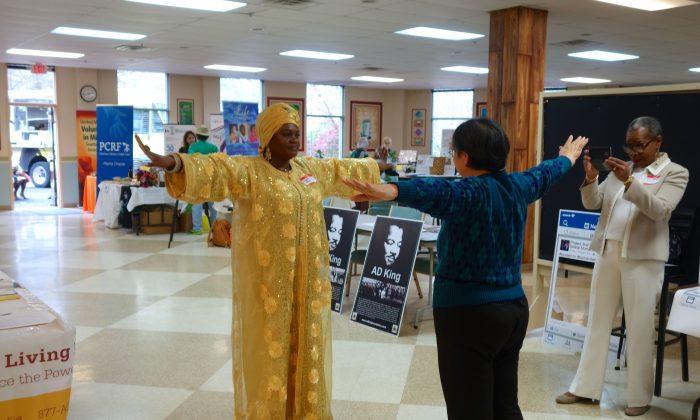It was a rare chance for reporters to learn about Common Core Standards from inside a school. It was a chance to see teachers using them with students. The always-excellent New America Media arranged it. I learned a lot at A Day in the Life of a Common Core Classroom: Media Tour of Duluth High School. And I am going to write a story about Common Core.
But what I am loving, right now, are the wheels, the beautiful wheels.
Reporters develop a little Sherlock Holmes thing, a slightly autistic eye for details. As we went from classroom to classroom, seeing how teachers integrate literacy into math and science, seeing how reading comprehension and abstract analysis are built into every subject, my gaze kept going to the floor.
Every desk had wheels. Every table had wheels. Every chair had wheels. They were sturdy and turned smoothly. They did not squeak or wobble.
In some classrooms, the desks were facing each other in sets of four, so that groups of four students worked on something, such as geometry problems, together. This was to teach collaboration. In others, they all faced the front for a traditional lecture format. This was to teach listening.
Teachers and students can rearrange the classroom quickly, depending on the task, because of those nice, quiet, sturdy wheels.
That a thing so simple and common sense could be present for students in real life made me happy.
My joy in wheels overflowed when I saw the library, excuse me, the media center, where there was a whole portable miniclassroom set up for us journalists. It could have been dispersed in an instant so that people could sit at desks to study or write on their own.
Media Specialist Dr. Janie Cowan said the wheels were intentional, so that the students could make the space meet their varying needs. It is meant to be a hub of technology and of either group work or individual research.
She said the space was “not only hooked up digitally to databases and programs, but hooked up acoustically.” It was designed to have quiet areas where sound was dampened. She could stand and speak loudly to our group, while people at a nearby bank of computers were not disturbed.
This is a perfect example of school library best practices. From university to elementary school, putting flexibility first and creating a community hub is state of the art.
But the thing that wowed me was that somebody “caressed the divine details,” as Vladimir Nabokov called them. Somebody did not just talk about making this work. Somebody thought it through down to the ground level, and put those nonsqueaky wheels on all the furniture.
*Image of “pencil on test“ via Shutterstock





